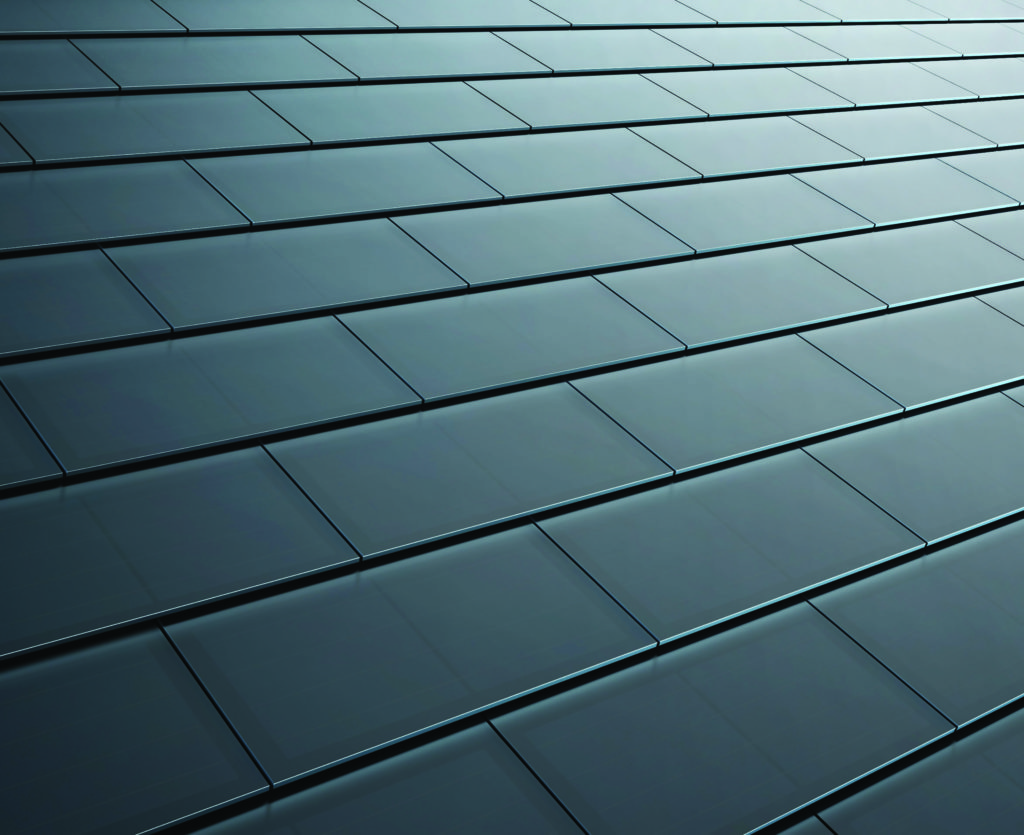
by Hilary Sterne
No doubt you know Tesla as the maker of plug-in cars that’s headed by Twitter-happy visionary and billionaire Elon Musk. What you may not know is that, in keeping with their eco-aesthetic, the company recently debuted a line of solar roofing tiles that belies the old adage there’s nothing new under the sun. A Tesla representative tells Purist : “They’re made from tempered glass, they’re more than three times stronger than standard roofing tiles, yet half the weight, and they don’t degrade over time like asphalt or concrete.”
In fact, the solar roofing tiles are guaranteed for the lifetime of your house. “Because the solar components are hidden within each tile,” the Tesla representative explains, “it’s indistinguishable from a non-solar tile.” Says Gordian Raacke, the executive director of the East Hampton-based nonprofit Renewable Energy Long Island and a renewable-energy advocate for more than two decades: “There are a lot of people who would go solar, but don’t like look of conventional solar panels. This fills that niche.”
But it’s what the tiles do that’s the real attraction for anyone who wants to save money, the planet, and themselves the headache of relying solely on the grid. Here’s how it works: Clean energy is harvested from the tile cells with almost no loss of efficiency and stored in an integrated Powerwall—a battery that provides uninterrupted juice to run your home (and electric car) even if there’s an outage, essentially turning it into a personal utility. The Powerwall detects any disconnect from the grid so quickly you won’t even notice a light flicker during a brownout. Meaning you and your house guests can rest assured the rosé in the fridge will stay chilled, and the water in the pool will stay heated.
Tesla’s solar roof calculator lets you estimate the cost of buying and installing the tiles—which average about $22/square foot of active tile, based on a roof that’s 35% solar tiles and 65% non-solar—as well as the value of the energy they can generate for your home. The calculator is based on factors like roof size, the average local price of electricity, and how much sunlight your neighborhood receives on average throughout the year. And while the upfront cost may be higher than that of other roofing materials, including traditional solar panels, once you factor in federal tax credits and the value of the energy generated, the roof will not only pay for itself, but earn you money in the long run. Says Raacke, “Typically, within six to eight years of installing a (conventional) solar roof, you pretty much get electricity for free for the rest of your life.”
The tiles are currently available in four finishes—slate, terracotta, smooth asphalt and textured asphalt, and Musk is betting you’ll be impressed. As he said at the product launch, “You’re gonna want to call your neighbors over and say, ‘Check out the sweet roof.’” tesla.com



